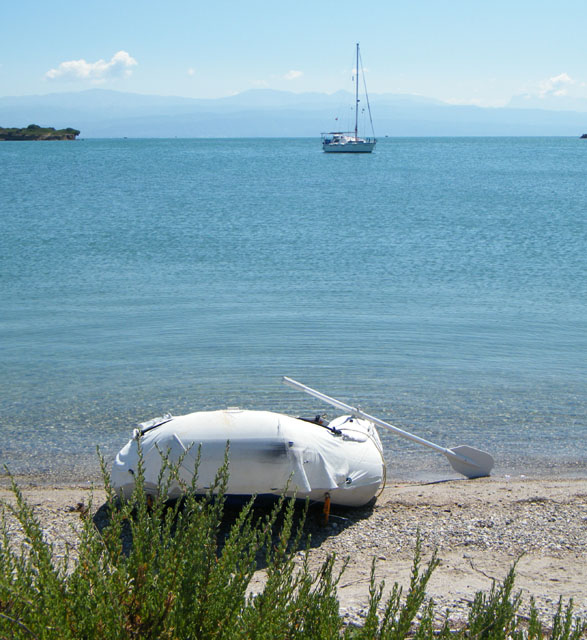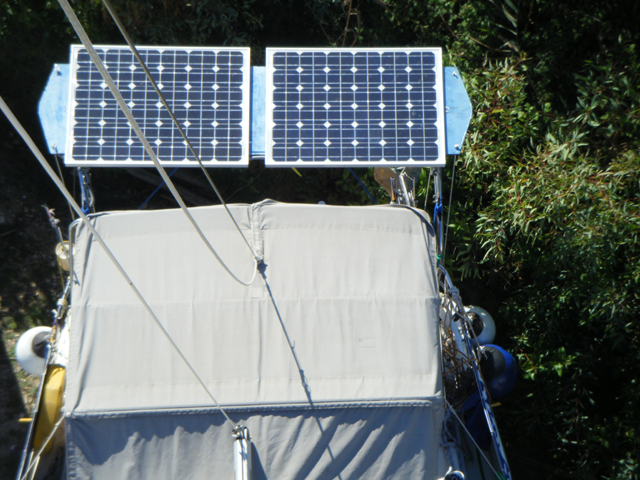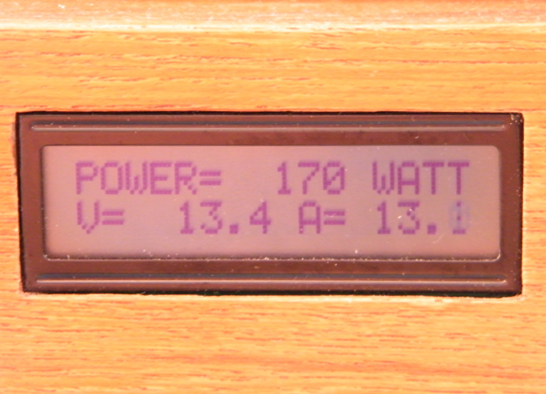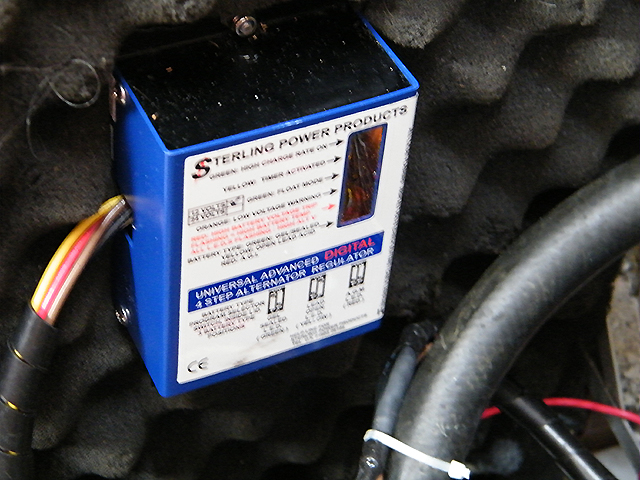
Go to ... |
EngineeringPage 1 - Power Management(>> page 2 - Maintenance)
Living aboard seems at times to be all about power management. Like it or not, unless you are an ascetic purest, if you have a fridge and if you have lights and fans and an electric windlass and computers and video players and navigation instruments and pumps you need power. By far the dominant power sink is the fridge and if it were to fail then our cruise would effectively be over until we could repair it. Because we are the product of power assisted cruising loss of the fridge would be catastrophic. 
Top of page | Go back | Home |
Google Ads, everyone has them but they'll bring us a few pennies if you click on one, thanks.
|

|
||
Solar panels
We have 200W of monocrystalline panels on a tilting mount clear of any shadows and feeding into the batteries through a Victron MPPT regulator. The current from the panels flows through a home built energy meter that helps us trim the angle of the mount and, when we can, the stern of the boat so that the panels are always square to the sun. The fridge monitor is also a purpose built instrument that gives us the temperatures of the freezer and fridge compartments and, crucially, the amount of energy the fridge takes. So we can readily compare the input energy from the panels with the fridge demand. From the meters we get a good idea of whether we're going to win the daily battle to put more into the batteries than we take out. The most power we've ever measured is 170 Watts which is 85% of the nominal panel output, which is pretty good.♥♥♥♥♥ Big batteries, right batteriesIn 2016 the 31XHS Trojans gave up after four years of intermittent use. They will be replaced in 2017 with two Trojan T1275 batteries which Trojan claim have a cyclic life almost twice that of the 31XHS. The cost of these batteries in Greece is almost twice the cost in the UK so it's cheaper to ship the batteries from there. The T1275 will give us an increase in Amp-hours to 260 Ah which means that - provided we can replace the daily discharge - the depth of discharge (DoD) will be less than for the previous batteries and consequently they will last longer. Time will tell. Alongside that we have a fairly standard diesel vehicle starter battery bought locally which has proved very reliable. In the locker is a pair of jump leads so we can play games with the battery configuration if we need to. Our mains charger will not allow sealed batteries so we are constrained to use open lead acid types. ♥♥♥♥♥ Top of page | Go back | HomeOther chargers
Before we left France we fitted a Sterling smart regulator to the alternator, thinking that we would be sailing so much in the Med that we would need every Amp we could get when we did run the engine. Of course the wind was either too much or too little or on the nose and we ended up motoring for about 80% of our voyage to Greece. However, we still think our simple regulator is well worth having and for those rare times when we have to suffer the disgrace of running our 42 HP turbo-charged engine just to top up the batteries it pays for itself in the reduced time it takes to get them back to scratch.♥♥♥
Plumbing
More specifically the toilet's holding tank. When we made the decision to sail to the Med' we knew we would have to fit a holding tank into which toilet waste could be diverted. It's a requirement of all the Med' countries although only Spain defines how big the tank should be. We fitted a 63 litre holding tank made by Tek-Tanks under our bunk in the cabin and connected it to the toilet via a three-way valve. The valve lets us direct the toilet discharge into the sea or into the tank. To empty the tank we have a choice of using the built-in diaphragm pump or having the contents sucked out in a marina. The tank size gives the two of us about a week before we have to pump it out. Incidentally we are of the school that believes that nothing should be flushed down the heads unless it has passed through your body first - toilet paper goes into a scented nappy bag. ♥♥♥♥♥ (>> page 2 - Maintenance)Top of page | Go back | Home |
||


